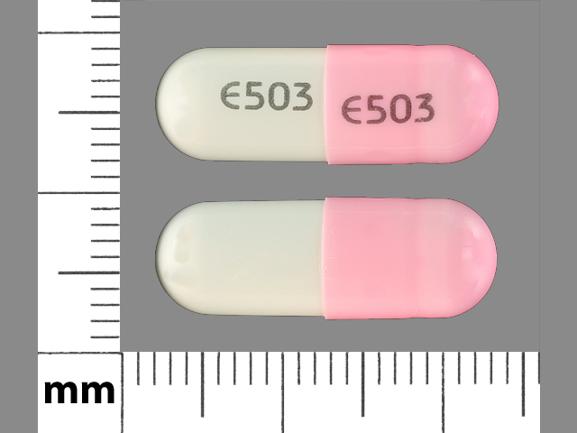Ursodiol Side Effects
Medically reviewed by Drugs.com. Last updated on Dec 12, 2023.
Applies to ursodiol: oral capsule, oral tablet.
Serious side effects of Ursodiol
Along with its needed effects, ursodiol may cause some unwanted effects. Although not all of these side effects may occur, if they do occur they may need medical attention.
Check with your doctor immediately if any of the following side effects occur while taking ursodiol:
More common
- Bladder pain
- bloody or cloudy urine
- difficult, burning, or painful urination
- dizziness
- fast heartbeat
- frequent urge to urinate
- indigestion
- lower back or side pain
- severe nausea
- skin rash or itching over the entire body
- stomach pain
- vomiting
- weakness
Less common
- Black, tarry stools
- chest pain
- chills or fever
- cough
- pinpoint red spots on the skin
- severe or continuing stomach pain
- sore throat or swollen glands
- sores, ulcers, or white spots on the lips or in the mouth
- unusual bleeding or bruising
- unusual tiredness or weakness
Incidence not known
- Chest tightness
- clay-colored stools
- dark urine
- difficulty with swallowing
- headache
- hives or welts
- hoarseness
- large, hive-like swelling on the face, eyelids, lips, tongue, throat, hands, legs, feet, or sex organs
- loss of appetite
- nausea
- redness of the skin
- slow or irregular breathing
- swelling of hands, ankles, feet, or lower legs
- unpleasant breath odor
- yellow eyes or skin
Other side effects of Ursodiol
Some side effects of ursodiol may occur that usually do not need medical attention. These side effects may go away during treatment as your body adjusts to the medicine. Also, your health care professional may be able to tell you about ways to prevent or reduce some of these side effects.
Check with your health care professional if any of the following side effects continue or are bothersome or if you have any questions about them:
More common
- Back pain
- body aches or pain
- constipation
- general feeling of discomfort or illness
- heartburn
- loss of voice
- muscle aches
- muscle or bone pain
- pain, swelling, or redness in the joints
- stuffy or runny nose
- sweating
- trouble sleeping
Less common
Rare
- Worsening psoriasis
Incidence not known
- Acid or sour stomach
- belching bloating or swelling of face, arms, hands, lower legs, or feet
- difficulty with moving
- loss or thinning of the hair
- rapid weight gain
- stomach discomfort or upset
- tingling of the hands or feet
- unusual weight gain or loss
For Healthcare Professionals
Applies to ursodiol: compounding powder, oral capsule, oral tablet.
General
The most commonly reported side effects included abdominal pain, diarrhea, constipation, and headache.[Ref]
Gastrointestinal
Very common (10% or more): Abdominal pain (up to 43.2%), diarrhea (up to 27.1%), constipation (up to 26.4%), nausea (up to 17.4%), dyspepsia (up to 16.8%), vomiting (up to 13.7%)
Common (1% to 10%): Cholecystitis, flatulence, gastrointestinal disorder, pasty stools, peptic ulcer
Very rare (less than 0.01%): Calcification of gallstones, severe upper right abdominal pain
Frequency not reported: Esophagitis
Postmarketing reports: Abdominal discomfort[Ref]
Calcification of gallstones may result in surgery, as bile acid therapy alone may not be able to dissolve the calcifications.
Severe upper right abdominal pain occurred in patients with primary biliary cirrhosis.[Ref]
Nervous system
Very common (10% or more): Headache (up to 24.8%), dizziness (up to 16.5%)[Ref]
Respiratory
Very common (10% or more): Upper respiratory tract infection (up to 15.5%), sinusitis (up to 11%)
Common (1% to 10%): Bronchitis, coughing, pharyngitis, rhinitis
Postmarketing reports: Cough, laryngeal edema[Ref]
Immunologic
Very common (10% or more): Viral infection (up to 19.4%)
Common (1% to 10%): Influenza-like symptoms[Ref]
Musculoskeletal
Very common (10% or more): Back pain (up to 11.8%)
Common (1% to 10%): Arthralgia, arthritis, musculoskeletal pain, myalgia[Ref]
Dermatologic
Common (1% to 10%): Alopecia, skin rash/rash
Very rare (less than 0.01%): Urticaria
Frequency not reported: Increased pruritus/pruritus
Postmarketing reports: Facial edema[Ref]
Hematologic
Common (1% to 10%): Leukopenia, thrombocytopenia[Ref]
Genitourinary
Common (1% to 10%): Dysmenorrhea, urinary tract infection[Ref]
Other
Common (1% to 10%): Fatigue
Frequency not reported: Asthenia, fever, other toxicity
Postmarketing reports: Malaise, pyrexia[Ref]
Hypersensitivity
Common (1% to 10%): Allergy
Frequency not reported: Allergic reactions
Postmarketing reports: Angioedema, drug hypersensitivity[Ref]
Drug hypersensitivity reactions included angioedema, facial edema, laryngeal edema, and urticaria.[Ref]
Psychiatric
Common (1% to 10%): Insomnia
Frequency not reported: Sleep disturbance[Ref]
Metabolic
Common (1% to 10%): Elevated blood glucose
Frequency not reported: Anorexia[Ref]
Cardiovascular
Common (1% to 10%): Chest pain
Postmarketing reports: Peripheral edema[Ref]
Renal
Common (1% to 10%): Elevated creatinine[Ref]
Hepatic
Very rare (less than 0.01%): Decompensation of hepatic cirrhosis
Frequency not reported: Increased cholestasis
Postmarketing reports: Aggravation of pre-existing jaundice/jaundice, ALT increased, AST increased, blood alkaline phosphatase increased, blood bilirubin increased, GGT increased, hepatic enzyme increased, liver function tests abnormal, transaminases increased[Ref]
Decompensation of hepatic cirrhosis occurred in patients with advanced stages of primary biliary cirrhosis. The condition partially regressed after treatment was discontinued.[Ref]
More about ursodiol
- Check interactions
- Compare alternatives
- Pricing & coupons
- Reviews (31)
- Drug images
- Dosage information
- During pregnancy
- Drug class: gallstone solubilizing agents
- Breastfeeding
- En español
Patient resources
Other brands
Actigall, Urso, Urso Forte, Reltone
Professional resources
Other brands
Related treatment guides
References
1. Product Information. Actigall (ursodiol). Novartis Pharmaceuticals. 2022.
2. Product Information. Urso (ursodiol). Scandipharm Inc. 2001;PROD.
3. Cerner Multum, Inc. UK Summary of Product Characteristics.
4. Cerner Multum, Inc. Australian Product Information.
Further information
Always consult your healthcare provider to ensure the information displayed on this page applies to your personal circumstances.
Some side effects may not be reported. You may report them to the FDA.

